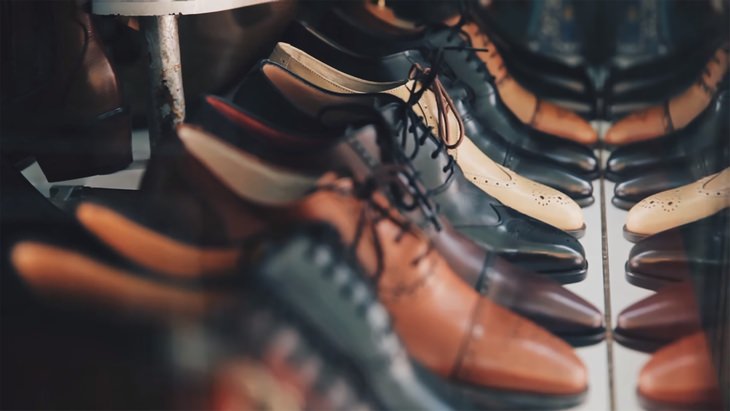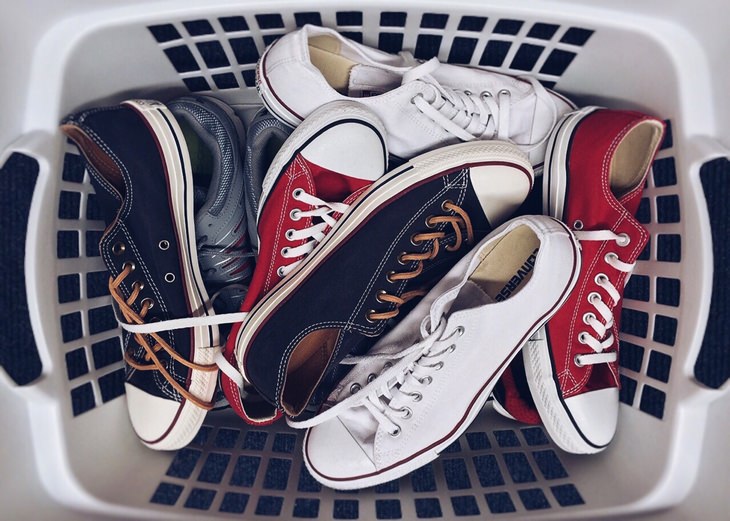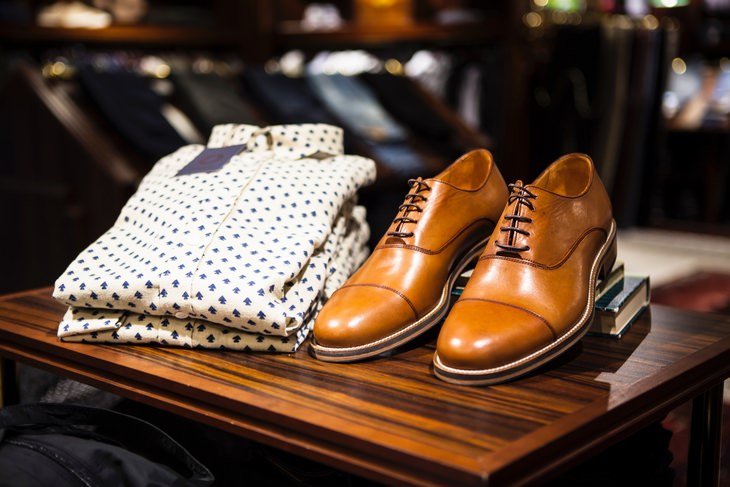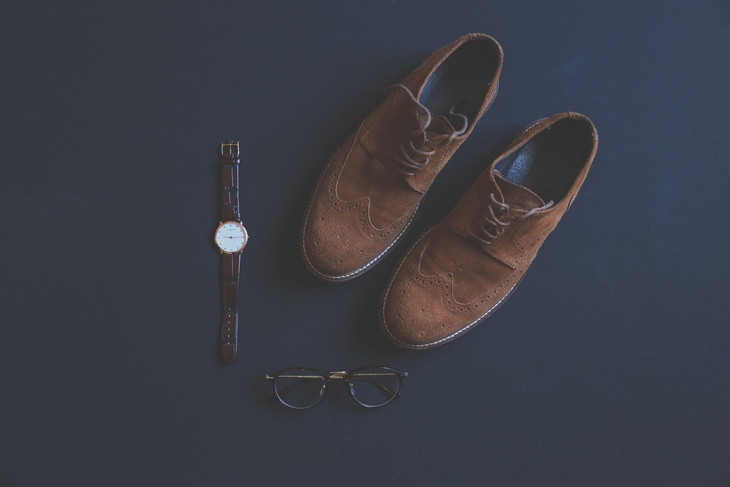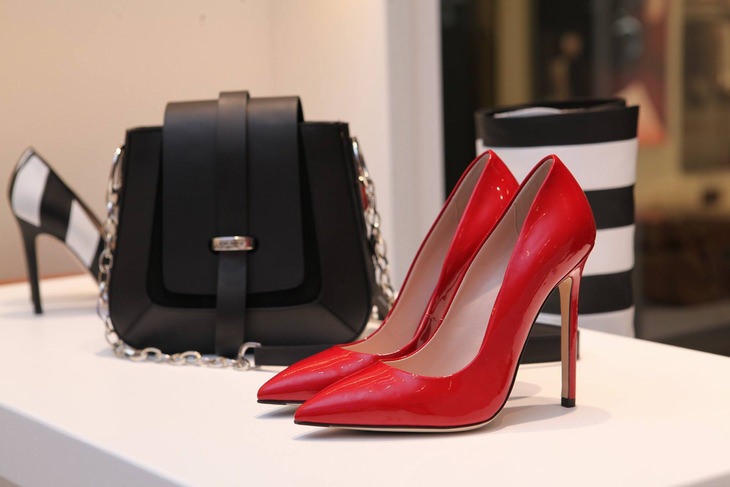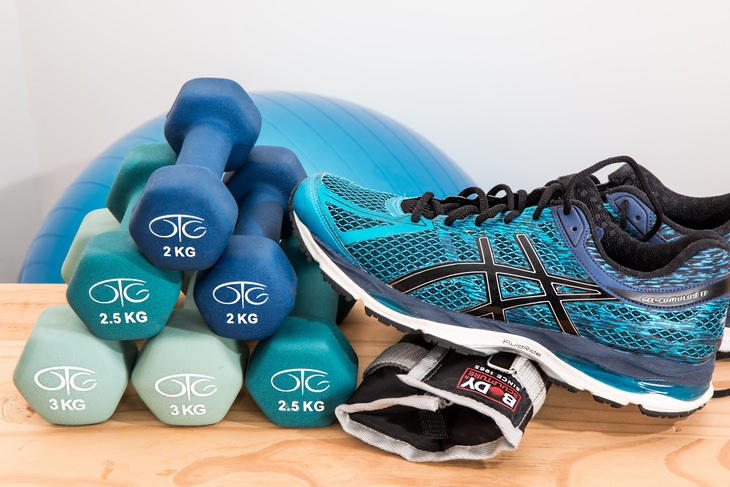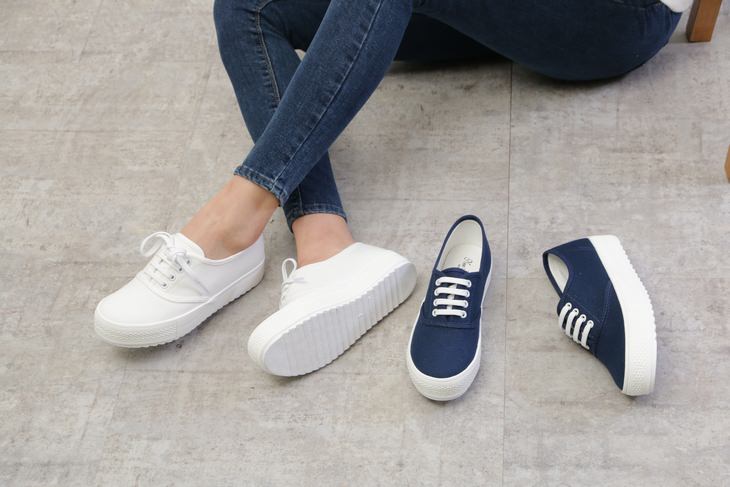5 general care instructions for shoes
1. The first lesson I learned is that irrespective of the fabric and even if the shoes don’t look dirty, make a rule for yourself to clean them down before applying any care products. And yes, with most shoes you will need to apply care products from time to time to protect them from the elements because prevention is key!
TIP: it is always a good idea to test the product on the heel (or other non-visible parts of the shoe) to check the color and performance of the product before using it on the entire shoe. The technique application is also essential: you should always apply products to your shoes from heel to toe, otherwise, you may stain the shoe in a visible spot should you apply too much product.
2. To prevent the shoes from losing their shape, store and dry them with tree horns or fill them loosely with paper (newspapers work wonderfully for this goal). Also, I find that shoes tend to lose their shape when I walk in them while they’re wet, so unless your shoes are water-repellant, try to avoid walking long distances while they’re wet.
3. To eradicate unpleasant smells, use baby wipes to clean the inside of the shoes. Also, try to take out the soles and let them air out for a day or two. Another method is sprinkling baking soda inside your shoes, letting it sit for a few hours and then wipe it away (or vacuum it). The baking soda will act like dry shampoo for your shoes and absorb the smells.
4. Remember, NEVER dry your shoes on a heat source like a radiator or in direct sunlight. This will cause discoloration and make the fabric hard and/or misshapen. Try soaking up the excess water by dabbing the shoes with a cloth and laying them down to dry at room temperatures instead, ideally in a dry and well-ventilated area.
5. To clean the outsoles of your shoes, use a 1:1 mixture of baking soda mixed with dish soap or laundry detergent and scrub them with a toothbrush. You can leave this mixture on for a few minutes (this will make the outsoles whiter) or rinse it off immediately.
Now that you’re familiar with the basics, let’s move on to specific fabrics shoes come in because each major type of fabric has its special needs.
Leather Shoes
Leather shoes are popular because they are comfortable, durable and flexible. Also, one can’t ignore the fact that leather shoes are just plain classy! At the same time, leather is a high-maintenance material and requires regular care. If not cared for properly, it tends to look dull and eventually cracks.
Cleaning
- The first step to cleaning leather shoes is to wipe off any dirt with a soft, dry cloth.
- If your shoes still seem dirty, grab some water and a gentle cleaner (e.g. saddle soap or 2 parts water diluted with 1 part white vinegar), and wash the stains away, making sure not to wet the leather too much. Avoid using a sponge, as it can degrade the leather.
- The water and vinegar mixture will also get rid of any salt- or water stains, any wax/polish buildup, and unpleasant smells so it is a very popular method.
- If you have any dark scratches on your leather shoes, use a shoe eraser to erase the darkness (a regular white eraser will do as well).
Care
- It is essential to polish leather shoes to protect them from water damage once a month.
- Before you start, remove the laces and/or any buckles if possible. Also, make sure your shoes are DRY.
- To polish your leather shoes, you can use a wax-based polish (try melted beeswax as an affordable alternative). Use a soft brush or a dry cloth to really work in the product into every crevice of the shoes, starting from heel to front, polishing it until the shoe is shiny and no excess product remains in any bends and crevices.
- If you’re using beeswax, you might need to heat it up with a hair-dryer midway to re-melt it while you’re polishing because it dries quickly.
- Lastly, use a water-protecting spray to make the shoes waterproof. In my opinion, this step is essential! You will need to spray the shoes with a thin coat of spray once in 2-3 months depending on the product and weather conditions.
Storage
- Keep your leather shoes in a shoebox or in a laundry bag, and NOT in a plastic bag to let it breathe.
- Store the shoes away from direct sunlight, as leather is prone to discoloration.
Suede Shoes
Suede shoes are infamous for being high-maintenance, although, in my opinion, they are much easier to maintain than leather shoes and just as beautiful. The key to picture-perfect suede shoes is a suede brush: a relatively stiff brush, often with a rubber and/or eraser element built into it.
Cleaning
- Once you cleaned the dirt off with a dry cloth, dampen a clean cloth in a mixture of mild soap and water and use it to clean the surface of the shoe.
- Go in with the above-mentioned brush, gently fluffing up the texture of the suede, always going in one direction.
- If any stains or scruffs remain, use the rubber or eraser end of the brush to clean the stain. The same goes for grease or grass stains.
Care
Now that the shoes are clean, it is important to protect them with a water-resistant spray. This is especially important for suede because it can be absolutely destroyed by water stains. Repeat once in 2-3 months.
Storage
Store suede shoes the same way as leather shoes.
Patent leather
Patent leather shoes are a shiny, sleek and low maintenance version of leather shoes. With patent leather shoes, protection is key because they are prone to color transfer and scratches, especially if they are light-colored, so it is very important to store them in a shoe bag or box.
If you want to bring back the shine to patent leather shoes, wipe them off with a dry cloth, just add a smidge of olive oil or Vaseline and buff it in with a dry cloth until they’re extra glossy.
Sneakers and other synthetic shoes
Synthetic materials are a must-have for modern sports shoes. These shoes are extremely comfortable and very popular for all ages. At the same time, they are durable and easy to maintain.
Cleaning
- Whether you’re dealing with mesh or faux leather, or both, they’re relatively easy to clean.
- As we did before, remove the shoelaces, get rid of the dirt and grime, now using a wet sponge on the faux leather and rubber elements of the shoes.
- Then, mix 1 teaspoon of laundry detergent or soap with a cup of water and clean the soft mesh sections.
- Clean the laces by throwing them into a laundry bag and washing them on the delicate setting while doing laundry.
Care
You don’t have to apply any products to synthetic shoes, but you can apply a transparent waterproof spray on dry, clean shoes to make them water-resistant.
Textile shoes (such as converse)
You’ve finally reached the section that will teach you to maintain your converse, slip-on shoes, and slippers. The great feature of these shoes is their breathability and low maintenance, as many shoes made out of fabric are machine-washable (see instructions on the care label of your shoes).
Cleaning
- If your textile shoes are machine-washable, you’re in luck, just remove any big chunks of dirt with a wet sponge or toothbrush and wash them on a delicate cycle using laundry detergent.
- If, however, your textile shoes have to be hand-washed, that’s easily-accomplishable as well. Just mix some laundry detergent with baking soda into a paste, take a toothbrush and scrub away until they look clean to you. If you’re cleaning slippers with fuzzy elements on them, wash them with your hands instead of scrubbing with a brush.
- When you’re done cleaning the shoes, rinse and tap with a dry cloth to remove excess water. Don’t squeeze or wring them out (yes, even the slippers), otherwise, their shape will be ruined.
Related Articles:

